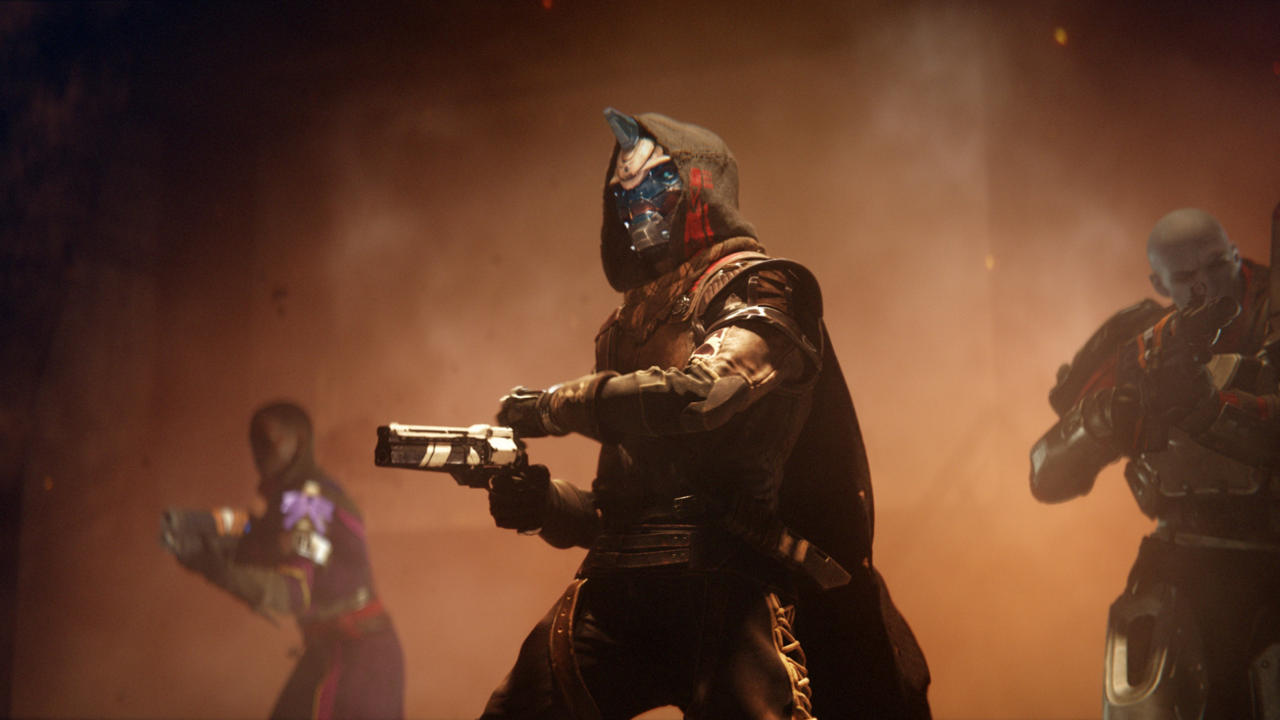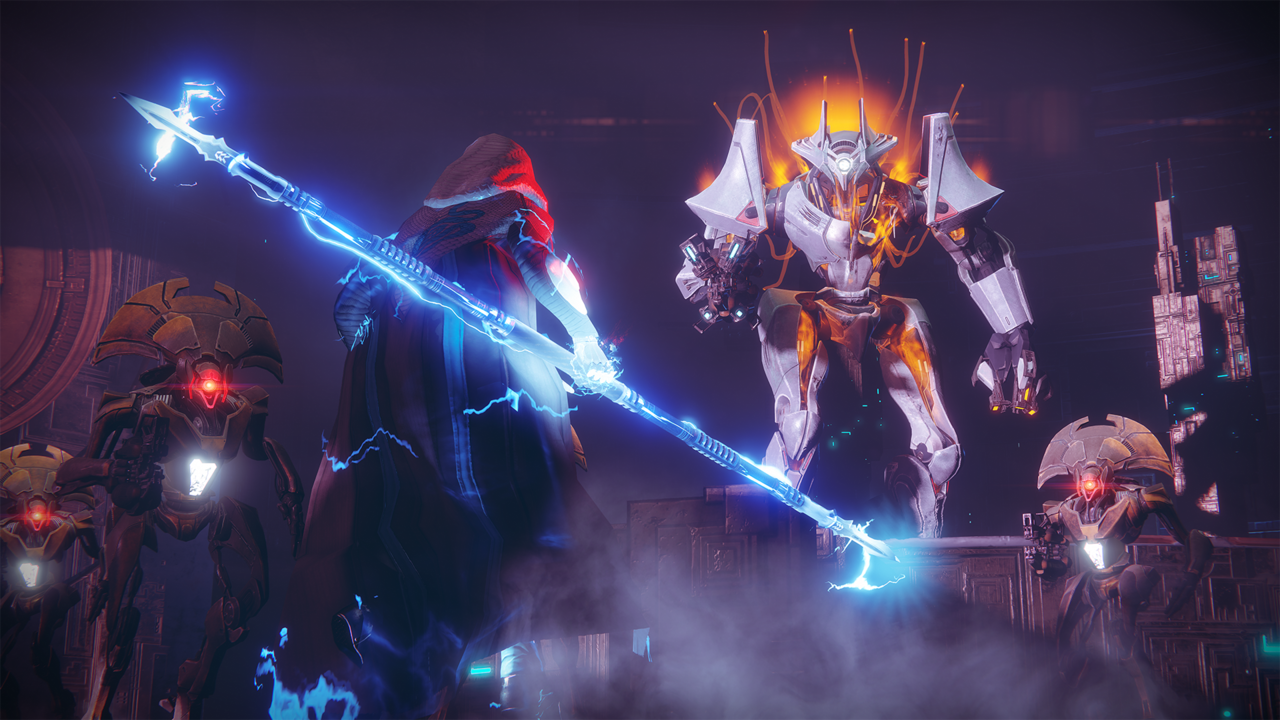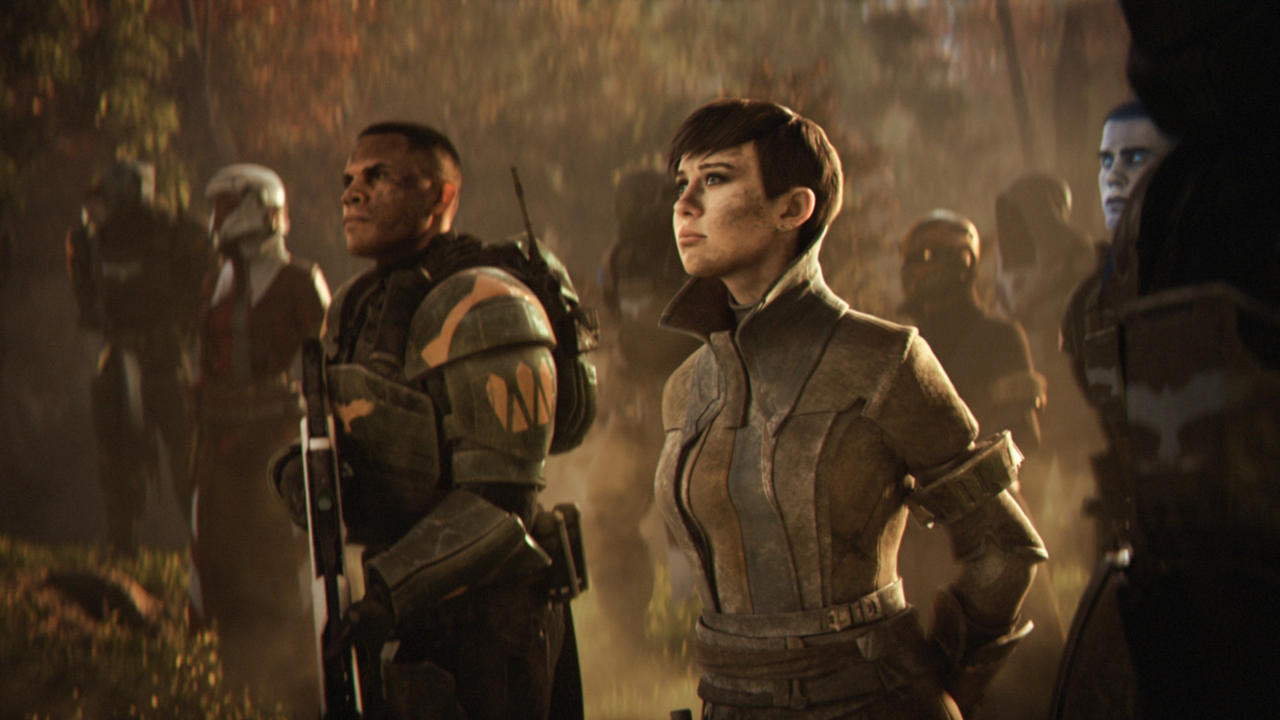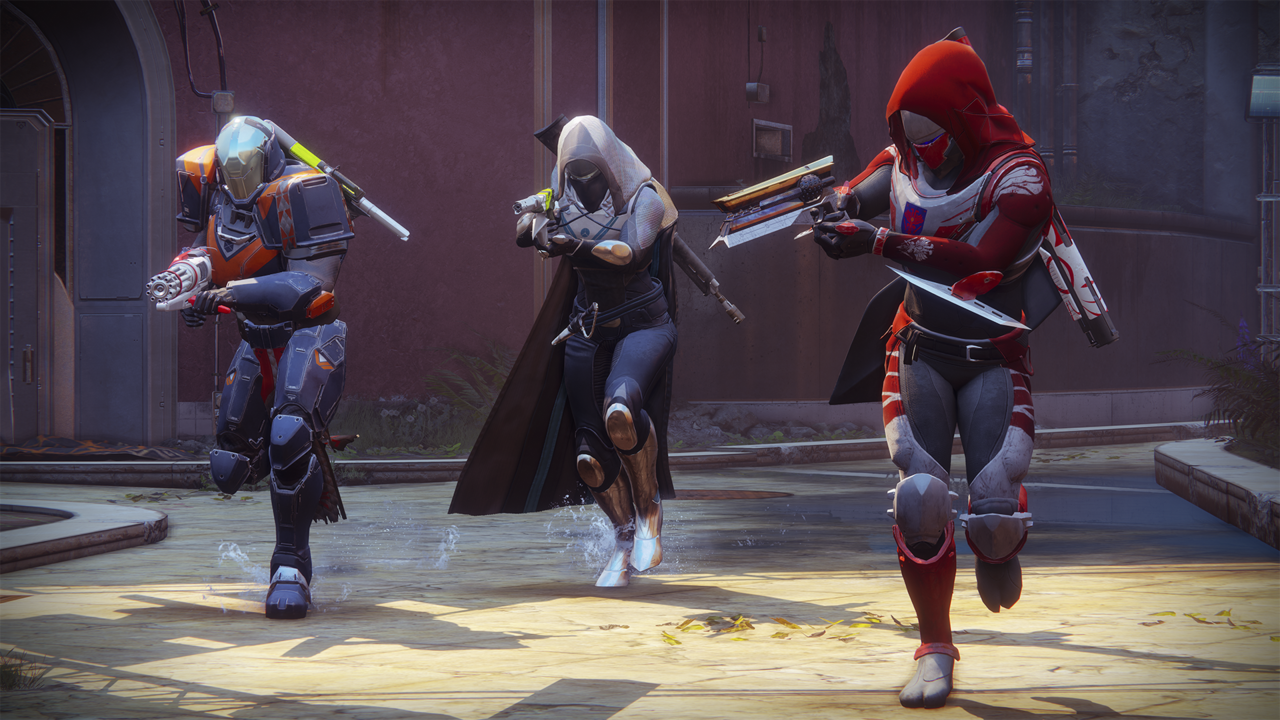If there's a single word to describe Destiny 2, it's disruption. In the sequel to Bungie's popular shared-world shooter, the Guardians of Earth have finally met their match with a new villain who's got his eyes on The Traveler. Our heroes, with their powers stripped away and all their gear destroyed, are pushed back to square one and have to relearn what it means to be a true Guardian of the Light. Though it's sad to see our valuable Exotics fade into the ether, this turns out to be a blessing, as the next adventure for our characters will bring new challenges, new rewards, and an even greater feeling of satisfaction when succeeding in the next big battle.
Though the general grind in Destiny 2 is the same as in the previous game, there are a number of major differences. During our extensive hands-on time before the launch of the game, we saw the many tweaks and additions coming to the game's core pillars, and how different it'll be compared to the years spent in the original Destiny. Let's take a look at five of the biggest changes in Destiny 2.

1. A More Directed and Focused Story
In Destiny 1, the story focused on re-establishing the influence of the Guardians, while battling the different enemy factions and dealing with the looming presence of the enigmatic force known as The Darkness. While its narrative was undoubtedly built on a universe with a vast history that had a lot of thought put into it, the story often struggled with conveying those ideas, opting for a more fragmented and episodic take to telling its story. With the sequel, Bungie has gone with a traditional approach for a more consistent narrative--gradually fleshing out its key characters and locales, and giving them the moments they deserve.
First referenced in The Taken King mission "Outbound Signal," the main antagonist of Destiny 2 is the Cabal Emperor Dominus Ghaul. Unlike the first game, which struggled to fully convey what role The Darkness played in the broader story--the warlord behind the Red Legion is a tangible character with story beats revealing why he came to Earth to find the Traveler, and what his plans are with its power. If you're a returning Guardian, the story will essentially pick up where you left off after Rise of Iron--assuming you already know who is who, and what you're fighting for. For the new Guardians, you'll gradually be introduced to the enemy factions and allies with slightly altered dialog and scenes to accommodate first timers to the Destiny fiction. In addition to a more well-rounded and developed campaign, finishing the main story will open up Destiny 2's broader end-game content, which the developers claim is where the story and many of its plot setups will pay off.
2. Rebalanced Gear and Engram System
To say that Destiny had a somewhat troubled approach to rewarding players would be putting it mildly. Players would famously come up with odd solutions to game the system, even going as far as to endlessly shoot into a cave filled with monsters to collect the clutter of engrams amassing on the ground. Destiny went through several overhauls over its first year and beyond--making great strides in The Taken King expansion--before it found a sense of equilibrium. In Destiny 2, the loot system has been revised even further, focusing more on keeping players in the action. Better gear comes in a steady stream, and generally won't come encrypted--enabling Guardians to improve their loadout on the fly, lessening the hassle of dragging loads of encrypted engrams to the Cryptarch.
Moreover, random rolls for weapons and armor have been dropped, ditching the frustration of finding a rare weapon with lousy perks. There are also more opportunities and ways to find new gear: Rewards come from high-profile targets that drop loot cases, Lost Sectors, along with turning in tokens and completing tasks for each planet's faction. When unlocking loot, you'll no longer have to undergo bizarre rituals to ensure you get the best outcome. Overall gear power in your entire inventory will be factored in, making switching over to your most powerful gear unnecessary. Furthermore, encrypted engrams are more rare, and only a maximum of ten can be held at any given time. Encrypted engrams only come in the form of Legendary, Exotic, and the new Bright Engrams, which we'll get into later.

3. Exploration
When it comes to exploration, Destiny 2 will make better use of your time in the open areas on each planet. While one of the main draws of Destiny 1 was about the exploration of planets and interstellar locales--and of course shooting tons of enemies--it often felt limited in scope with its focus on repeating daily missions and Patrols. Places like Destiny 2's European Dead Zone--the largest map in a Destiny game--are filled with new diversions and opportunities that make each location feel more fleshed out and convenient. With public quests and other activities shown clearly on the director map--along with timers for upcoming events, rally flags to summon Guardians, and an extremely helpful fast-travel option at key sites around the map--there's much less busy work when trying to figure out what to do next. Furthermore, the new Lost Sector dungeons offer dangerous foes--including elite variants of powerful enemies--and rare, exclusive rewards.
While there are still plenty of Patrol and story missions taking you around the various game worlds, the new adventure missions are more directed quests given out by allies in the field. Focusing on the history of the planet and its people, they'll send you to the more obscure and bizarre reaches of the world, providing an opportunity to learn more about the setting and the characters who inhabit it. During an adventure mission on Nessus, you and your Ghost will be joined by another ally named Failsafe--an AI that possesses two unique and conflicting personalities. These missions can often be humorous and thrilling, and offer a nice break from the more epic, set-piece focused story missions as well as the plain objectives of the Patrols.
4. Customization
Though the original game had customization with its various shaders, ships, sparrows, and unique pieces of class armor to unlock, it often felt rudimentary--making the sight of a similar type of Guardian a common occurrence. The sequel will offer more variation and change up a number of systems that made the accessories and options feel constrained. On top of this, the Eververse will have more use aside from being the designated microtransaction shop. Bright Engrams are a special new type of loot drop that yield a variety of cosmetic and gameplay items, including shaders--which are now consumables applied to single pieces of gear--and brand-new ships for your Guardian.
Bright Engrams are found through quests, chests, and random drop from foes. After reaching level 20, each time you fill the EXP bar after will grant a new Bright Engram--replacing Mote of Light rewards--making new accessories more available than ever. These are joined by new items called Auras, a dedicated option for visual effects such as flames and other distinct designs that are applied to your characters. Cosmetics now come in a variety of tiers, such an odd Exotic Emote that allows the Guardian to summon a table made of multi-colored lights and flip it over. Moving over to weapons, there are ways to further customize your loadouts as well. In addition to the various shaders, new weapon mods are obtainable. These mods have strange effects such as altering elemental properties, turning a Void auto-rifle into an arc damage weapon.

5. Social
While the Destiny community is resilient for keeping up with the first game, there were a distinct lack of systems to support players in the long run. Several websites popped up to fill in such gaps: such as helping track public events, enabling clan support, and finding players with "looking for group" databases. While clever, they're the result of a lack of systems to help keep up with certain aspects in the game. In Destiny 2, Bungie has made great strides with integrating these features into the game. Matchmaking is now available for solo players looking to get into high-end content such as raids and nightfalls, pairing them up with clans and other fireteams looking for members. With the updated Destiny Companion app, you'll be able to keep track of your current progress with your characters, their gear, while checking in on the Destiny community's forums and fan-art collectives. The app also includes an integrated group finder tool that helps to coordinate games with others.
Along with regular updates and posts from the developers detailing hot-fixes and upcoming updates, the app's the recruitment options allow Guardians to organize groups for Strikes, Nightfalls, Crucible matches, and general questing. There is now also dedicated clan support, giving players the chance to create a group on Bungie's official site and invite members of the community to join. Along with creating unique banners, and having Clan-dedicated chats and forums, a Clan will also work together to gain unique rewards and bonuses through their journey--which are cumulatively added up among members. These rewards come in many forms, such as unique emblems and auras, but will constantly change depending on the weekly refresh.

For those returning to the series, Destiny 2 will be an experience that is familiar but more refined in its approach to building up a unique character. And for both existing players and those coming in fresh, Bungie's sequel looks to offer a stunning and broad game world to explore--along with tons of loot to find and monsters to shoot.











